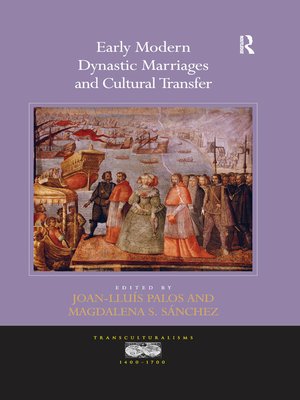Early Modern Dynastic Marriages and Cultural Transfer
ebook ∣ Transculturalisms, 1400-1700
By Joan-Lluis Palos

Sign up to save your library
With an OverDrive account, you can save your favorite libraries for at-a-glance information about availability. Find out more about OverDrive accounts.
Find this title in Libby, the library reading app by OverDrive.



Search for a digital library with this title
Title found at these libraries:
| Library Name | Distance |
|---|---|
| Loading... |
Toward the end of the fifteenth century, the Habsburg family began to rely on dynastic marriage to unite an array of territories, eventually creating an empire as had not been seen in Europe since the Romans. Other European rulers followed the Habsburgs' lead in forging ties through dynastic marriages. Because of these marriages, many more aristocrats (especially women) left their homelands to reside elsewhere. Until now, historians have viewed these unions from a primarily political viewpoint and have paid scant attention to the personal dimensions of these relocations. Separated from their family and thrust into a strange new land in which language, attire, religion, food, and cultural practices were often different, these young aristocrats were forced to conform to new customs or adapt their own customs to a new cultural setting. Early Modern Dynastic Marriages and Cultural Transfer examines these marriages as important agents of cultural transfer, emphasizing how marriages could lead to the creation of a cosmopolitan culture, common to the elites of Europe. These essays focus on the personal and domestic dimensions of early modern European court life, examining such areas as women's devotional practices, fashion, patronage, and culinary traditions.







